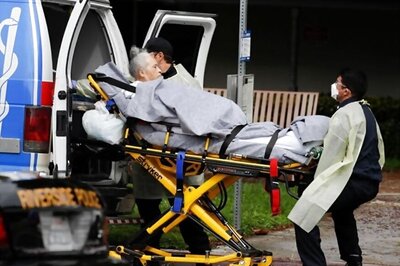
views
The third possible wave of the coronavirus pandemic is unlikely to affect the children more than the adult population, according to a survey conducted by the World Health Organisation (WHO) and the All India Institute of Medical Sciences (AIIMS) Delhi.
The survey, conducted across five states involving a sample population of 10,000, found high seroprevalence among children, which may offer them protection from the third wave.
“SARS-CoV-2 sero-positivity rate among children was high and were comparable to the adult population. Hence, it is unlikely that any future third wave by prevailing COVID19 variant would disproportionately affect children two years or older,” the survey stated.
The results were taken during midterm analysis, which were based on the data of 4,500 participants from four states. More results are awaited in the coming months.
The survey showed very high seroprevalence in resettlement colonies in South Delhi’s overpopulated urban areas — at 74.7 per cent, which is an unprecedented figure reported in any sero survey conducted so far, said Dr Puneet Misra, Professor of Community Medicine at AIIMS Delhi, who was one of the authors of the study.
The survey, however, stated that currently, “we are reporting the available data of 2-17 years age group from Delhi urban and rural sites of, National Capital region of Delhi (NCR), Bhubaneswar, Gorakhpur and Tripura”.
Seroprevalence was high among children in South Delhi even before the second coronavirus wave — at 73.9 per cent. This was just slightly less than the percentage recorded among those above 18 years — 74.8 per cent.
ANI quoted Dr Mishra as saying that congested pockets in Delhi and NCR, primarily Faridabad, may have higher seroprevalence after the brutal second wave, adding that such high seropositivity may offer protection to the children against the possible third wave.
High seroprevalence in Gorakhpur rural areas
The WHO-AIIMS survey also suggested opening schools in Delhi’s urban areas since children there have high seroprevalence.
The survey said that during the second wave, Faridabad rural areas reported a seroprevalence of nearly 59.3 per cent — both among children and adults, and this could be considered high as compared to past national sero surveys.
Gorakhpur Rural in Uttar Pradesh has also recorded a very high seroprevalence of 87.9 per cent (among those aged 2-18 years), while those above 18 years had a seroprevalence of 90.3 per cent.
It further said that more than half — 62.3 per cent — of the total rural population that was surveyed has shown evidence of past coronavirus infection.
The lowest seroprevalence has been recorded in Agartala’s rural areas — at 51.9 per cent. This could be because of the presence of a considerably high tribal population there, which usually have less mobility, thus leading to less exposure to coronavirus.
Read all the Latest News, Breaking News and Coronavirus News here.



















Comments
0 comment